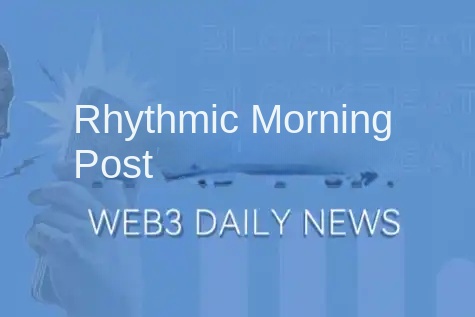Start repurchase dividends, upgrade security modules, and deeply interpret Aave's new economic model
Original title: "Starting buyback dividends, security module upgrade: in-depth interpretation of Aave's new economic model"
Original author: Alex Xu, Mint Ventures
Aave is one of the projects that the author has been following for a long time. Yesterday, its governance team ACI released a draft of Aave's new economic model in the community forum, announcing expected upgrades in many aspects such as the value capture of Aave tokens and the security model of the protocol.
Regarding Aave, the author has a relatively complete analysis of its current situation, competitiveness and valuation in a recent article: 《The continuous decline of altcoins may be the best time to deploy DeFi》
This article focuses on this latest proposal with huge impact, and mainly answers the following 4 questions:
1. What are the main contents of the proposal?
2. The potential impact of each main content
3. The timetable and triggering conditions for the implementation of the proposal
4. How this proposal may affect Aave in the medium and long term The price of the token
Original proposal: https://governance.aave.com/t/temp-check-aavenomics-update/18379
1. The core content of the AAVEnomics proposal
The full name of the proposal is [TEMP CHECK] AAVEnomics update. It is in the early stage of community proposals, namely the "temperature check" stage. The release time is 15 hours ago. The initiator of the proposal is ACI, who can be understood as the governance representative of the Aave official team. ACI is also the mastermind and main coordinator of community governance. Its important proposals are generally fully communicated with other governance representatives and professional service providers before release, so the probability of passing is very high.
[TEMP CHECK] The main contents of AAVEnomics update are as follows:
1. Introducing Aave’s current good operating status and abundant financial reserves
The project continues to be a leader in the lending sector, with revenue levels far exceeding project expenses, and reserve funds mostly in ETH and stablecoins, so there is an opportunity to update the economic model and start protocol income distribution.
2. Update of bad debt handling mechanism: the original "security module" is gradually withdrawing from the stage, and the new security system Umbrella is launched
Aave currently provides reserves for possible protocol bad debts. This mechanism is called the "security module". This part of the reserve currently consists of three parts:
· Staked Aave, now worth 275 million US dollars
· Staked Aave native stablecoin GHO, now worth 60 million US dollars
· Staked Aave-ETH LP, which is also one of the main sources of liquidity on the Aave chain, is now worth 124 million US dollars
The newly launched "Umbrella" security system will replace the original security module. Specifically:
· The system's bad debt reserve will be managed by the new aToken module. The funds of this module come from users who voluntarily deposit. After the user deposits, he will not only receive the original deposit interest income, but also receive additional security subsidies. The subsidies come from Aave's protocol income. 3. The new role of the Aave token and the start of protocol profit distribution. The Aave pledge module still exists, but the pledged Aave no longer serves as a risk reserve, but has two functions: · You can obtain the profit surplus distribution of the protocol in addition to the funds required for operation. The method is that Aave's financial team will regularly repurchase Aave in the secondary market through community governance proposals and distribute the profits to pledgers. · Staking Aave can obtain "Anti-GHO", which can be used to offset your GHO stablecoin debt, or it can be directly deposited in the GHO pledge module, so Aave can also obtain GHO Profits generated
4. Changes in the GHO pledge module
The original GHO pledge module needed to guarantee the bad debts of the entire Aave protocol system, but after the change, only the bad debts of the GHO part were guaranteed.
5. Others
· The liquidity of Aave tokens no longer depends on the Aave-ETH incentive in the pledge module, but is handed over to the ALC (Aave Liquidity Committee)
· The exchange of the protocol’s first-generation token Lend to Aave will be terminated, and tokens that are not exchanged on time will be transferred to the treasury
The new economic model relationship diagram of Aave can be seen:

2. Impact of the proposal
There are two main impacts:
Aave tokens have a relatively clear value capture, and the selling pressure is further reduced, which is further linked to the good development of the protocol
· Value capture comes from: income repurchase from the interest spread of the protocol + feedback from GHO interest income
· The reduction in selling pressure comes from: the deactivation of the staking module, which also means that Aave will use the stablecoin and ETH of the protocol income as expenditure tokens to replace the output of Aave tokens, which will directly reduce Aave’s selling pressure and will also allow Aave is more scarce
The introduction of the Umbrella Security Module makes the structure of the protocol more flexible, further optimizes the protocol incentives, further improves the protocol’s governance ceiling in terms of security, and also puts forward higher governance requirements:
· The original Aave security module is entirely incentivized by Aave emissions, with little flexibility. The Umbrella Security Module is similar to Eigenlayer’s AVS model. It is a modular module that can be customized for incentives based on asset class, time, and capacity
· This also means that in addition to risk indicators such as asset size, interest rate curve, and LTV, Aave’s risk team has another indicator that needs to be evaluated and formulated
3. Timetable and prerequisites for the implementation of the plan
ACI stated that the implementation of the plan will be implemented in a step-by-step manner, divided into three stages (three governance proposals) according to different prerequisites to implement the above content.
Phase 1: Changes to the pledge mechanism and GHO mechanism
· GHO pledge is only responsible for the bad debt guarantee of the GHO debt part
· Aave and Aave-ETH pledge modules are changed to "legacy security modules" and continue to play the guarantee function before being replaced. The cooling period of Aave pledge is set to 0
Preconditions: Already met
Execution time: After this proposal obtains sufficient community opinions and Aave's main community developer BGD Labs approves the Umbrella upgrade
Phase 2: Aave token function update, new economic model gradually launched
· End staking Aave to get GHO interest
· Anti-GHO function of discount function launched, staking Aave can get Anti-GHO
· Close Lend exchange for Aave
Prerequisites:
· GHO scale reaches 175 million (currently around 100 million)
· GHO’s secondary liquidity can reach “10 million transaction scale has less than 1% impact on price”. Currently, the transaction scale that affects GHO price by 1% is about 2.1 million
Phase 3: Aave fee switch activated, repurchase started
· Turn off the traditional security module
· Activate the aToken mode of the umbrella security module. Users can use their deposits to provide collateral for the system and will receive additional rewards
· Aave financial service providers enable the repurchase of Aave through governance and distribute it to Aave stakers, and gradually achieve automation
Prerequisites:
· The average net asset value of the Aave income pool in the past 30 days is sufficient to cover the expenses of existing service providers for 2 years
*Currently, the total assets of the Aave treasury excluding Aave tokens are approximately US$67 million (61% stablecoins, 25% Ethereum, and 3% BTC), while Aave's annual expenditure for 24 years is approximately US$35 million (data given by the head of ACI). If the expenditure level in 25 years is similar, the expenditure for two years will be US$7000 10,000 USD. Considering that Aave’s weekly revenue has been basically 1-2 million USD this year, the two are already quite close and can reach that level in about a month.

Composition of Aave’s treasury funds, source: https://aave.tokenlogic.xyz/treasury

Aave’s protocol revenue, source: https://aave.tokenlogic.xyz/revenue
· The annualized revenue of the Aave protocol in the last 90 days has reached 150% of all protocol expenditures since the beginning of the year (sic), including AAVE's buyback budget and the expenditure of the umbrella security module
*The budget is defined, allocated and adjusted by the Aave Finance service provider every quarter.
In general, Phase 1 is ready for launch, and Phase 2 is expected to take several months (depending on the liquidity budget and investment of the liquidity committee for GHO). The launch time of Phase 3 is not easy to predict, which is affected by factors such as specific budget plans, market environment and revenue, but considering Aave's current strong revenue level, it is not difficult to meet the standards.
Fourth, how will the proposal affect the price of Aave tokens in the medium and long term?
In the long run, the proposal clearly links the development of the Aave protocol with the Aave token for the first time. The lower limit of the Aave token has a buyback bottom, and the holders have cash flow income, which is beneficial to the price of Aave.
However, considering that the implementation of the proposal takes time and is carried out in batches, and the proposal has just been published for less than a day, the specific terms still need to be discussed and revised, so the value capture of the Aave token is a gradual and long-term process.
However, if the proposal is successfully implemented, Aave, as one of the largest Defi projects at present, its standardized and transparent governance, and rewards for token supporters, may make it further favored by investors with value investment preferences. These investors may not only come from the currency circle, but also include Web3 newcomers from the traditional financial field.
Original link
Welcome to join the official BlockBeats community:
Telegram Subscription Group: https://t.me/theblockbeats
Telegram Discussion Group: https://t.me/BlockBeats_App
Official Twitter Account: https://twitter.com/BlockBeatsAsia
 Forum
Forum OPRR
OPRR Finance
Finance
 Specials
Specials
 On-chain Eco
On-chain Eco
 Entry
Entry
 Podcasts
Podcasts
 Data
Data


 Summarized by AI
Summarized by AI







